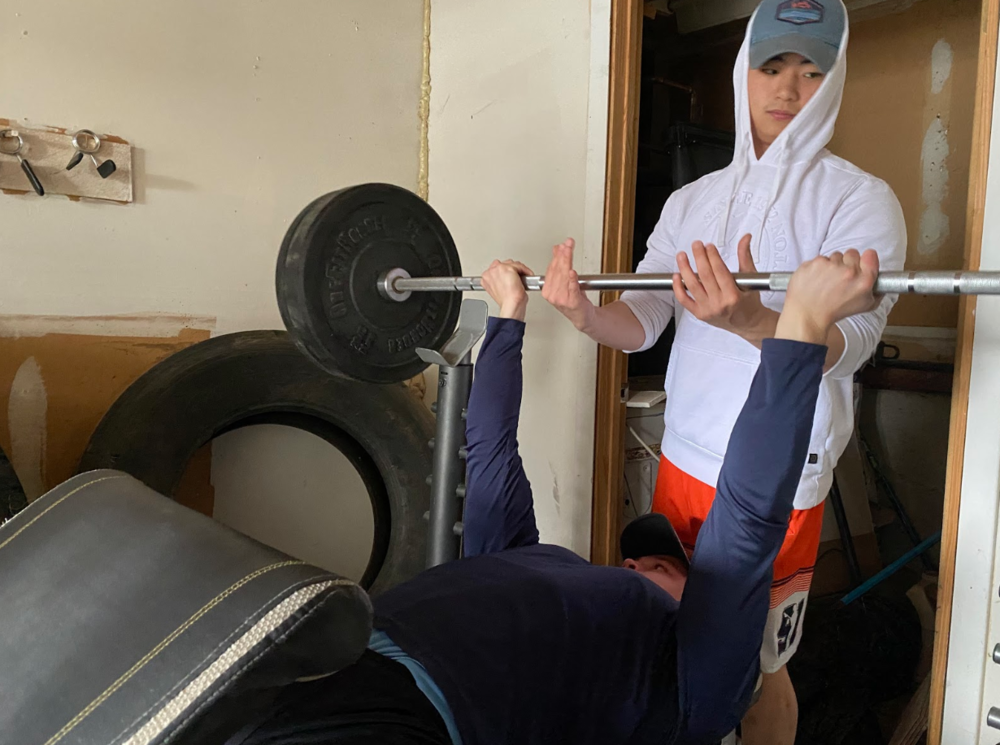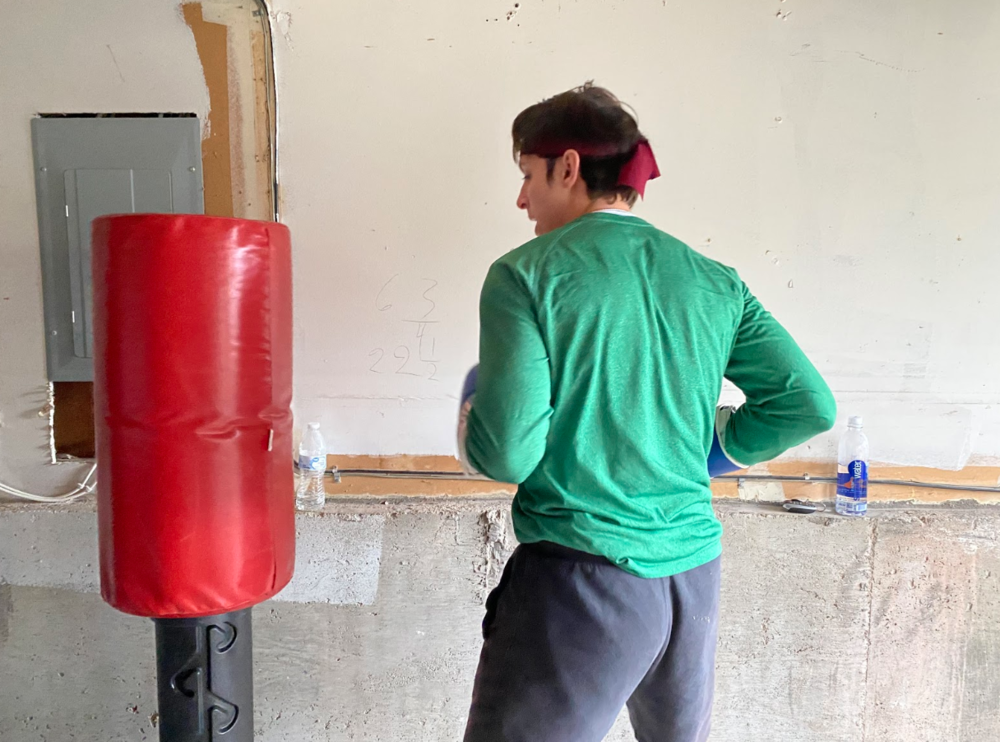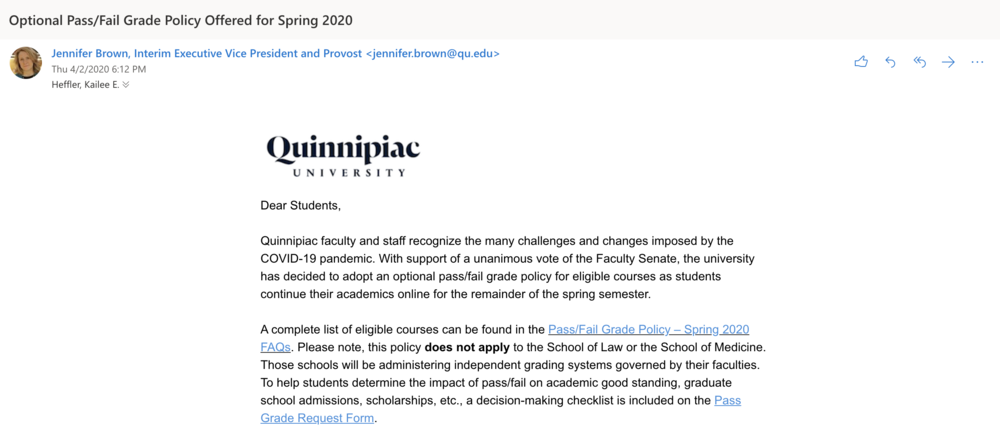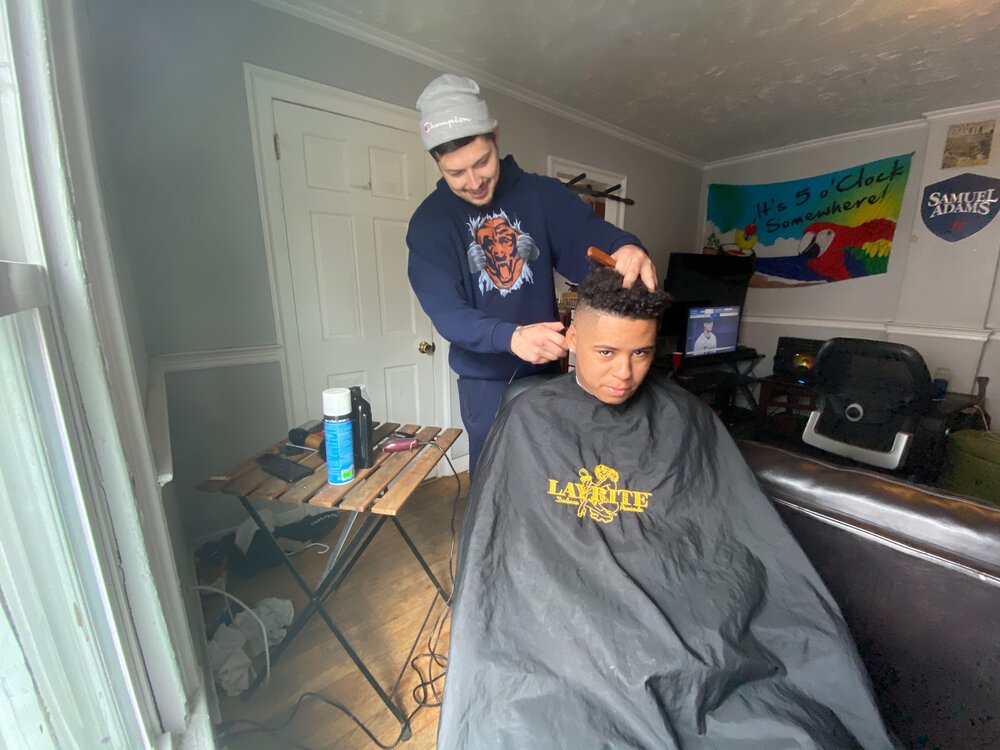By Kailee Heffler
From interviewing WNBA players to creating tutorials with college athletes, Arielle Chambers covers it all. She travels the country working events such as NBA all-star games and modeling, but Chambers also finds work in the influencer world.

Arielle Chambers at the Bleacher Report where she works as the talent, producer and programmer. (Photo courtesy of Arielle Chamber’s Instagram @ariivory)
“I’d like for people to view me as a journalist with influence, but the title ‘influencer’ is sufficient. I love it,” Chambers said. “I love that I can touch lives with my work and relay my passion.”
Chambers works at the Bleacher Report in a hybrid role.
She is the talent, producer and programmer all in one.
Her main focus is women’s sporting events, diving into features, profiles and cultural angles. Chambers’ experiences lie heavy in journalism-editorial, making writing her strength. But over the years she has developed strengths within the digital world.

Arielle Chambers on the House of Highlights Twitter show. She spoke about the deep rivalry between the football teams at Auburn University and the University of Georgia in November of 2019. (Photo courtesy of Arielle Chamber’s Instagram @ariivory)
With a following of over 17,000 between her Twitter and Instagram accounts, Chambers uses her platform as an influencer to profit off content she posts.

“I make anywhere between $250-1,000 per post that’s sponsored – $250 is the absolute minimum for me and those are the clients I’ve worked with often, have shot a campaign prior, and that are recurring,” Chambers said. “My average is about $700/post. I negotiate based on my familiarity with the client and how the client aligns with my brand.”
Two-thirds of social media consumers desire to be paid influencers, a 2020 survey by IZEA Worldwide revealed. Just over half the consumers have made a purchase based off an influencer’s post.
Influencers hold power over social media and are able to sway consumer beliefs.
The survey also found that 63% of consumers say they find the content created by social media influencers to be more compelling than scripted advertising written by a marketing professional.
Chambers said, “We touch lives. People fall in love with your voice/style, so you don’t have to change for a larger company. Companies hire you to be you.”
But, the lifestyle has its downsides, too.
“The cons are the fact there’s never any down time,” she said. “Because of the consistency it requires, being an influencer can be very demanding. You have to stay on top of things to maintain your audience.”
Chambers has experienced firsthand how demanding maintaining an audience on social platforms can be.
“The travel to all of the games to get content with the players is most demanding. Two seasons ago, the (WNBA) had a condensed schedule and I had to travel with the Los Angeles Sparks. I’m not sure how many time zones I was in within four days, but I was exhausted,” Chambers said. “All for content. All for the interview.”
The life of an influencer has an allure to it, but it takes more to be an influencer than it appears.

Amanda Perelli seen here with Dr. Mike, a doctor, internet celebrity. Dr. Mike went viral in 2015 after he was featured in Buzzfeed and People. He also maintains a Youtube channel. (Photo courtesy of Amanda Perelli)
Amanda Perelli covers the business of influencers for Business Insider.
“The people who are actually doing it – and actually making money doing it successfully – they are not sitting around on Instagram all day,” she said. “They are putting so much effort into it with their team. It is more than what you think it is.”
Some influencers work with teams that consist of managers, agents, publicists, assistants and editors.
“It is a weird word,” Perelli said. “People think of it in a weird way. People tend not to like them or people think they think they are better than everyone or they are just rich for doing nothing and they don’t have real jobs.”
Yet, influencers who consider what they do as a full-time job are not the only people who can be influencers. Influencers can be anyone, from someone posting tutorials with a small following to someone promoting brands with a large following.
Influencers who have a following are called macro-, micro- or nano-influencers.

Macro-influencers are people who have anywhere from 100,000 followers to over a million. These are the influencers who make a profit off the brands or products they promote to their followers.
Micro-influencers have a smaller following than macro-influencers. They have between 10,000 to 100,000 followers. These influencers can make a profit off brand promotions, but they are not promoting as often as macro-influencers.
Then there are nano-influencers who have less than 10,000 followers. These influencers may be promoting smaller company brands, but provide a value to their community.
“Many nano- and micro-influencers are working alone so they can work towards building their community and voice online,” Karen Freberg, associate professor of strategic communications at the University of Louisville, said.
“However, we are seeing more influencers hire agencies, talent managers and others to help them get more opportunities, help with the logistics and other elements so influencers can focus on creating their content.”
Macro-, micro- and nano-influencers establish trust within their communities which lead to higher engagement rates.
“We are seeing micro- and nano-influencers getting more engagement and trust associated with their work than others that are viewed to be doing it just for the money,” Freberg said. “I think people listen and look at what they are doing – but those who take the time to build trust over time, they will be successful in this area.”
One imperative quality about an influencer is that they are able to add value to the community they engage with.
“An influencer is on social media whether it is Tik Tok, Instagram, YouTube, Pinterest or even LindedkIn – any social media platform that has an audience of any size giving tips or advice, giving some sort of value,” Perelli said.
An influencer is not a career path that developed overnight, but a career path that has developed because of the expansion of social media.
Susie Khamis is a senior lecturer in public communications at the University of Technology Sydney.
“Due to the growth of social media platforms that are easy to use, popular, aesthetically pleasing, like Instagram, it’s motivated amateurs to ‘have a go’ – since the rewards are pretty obvious: fame, influence and profit,” she said. “So we are seeing more people cultivate an online presence in smart ways – with a view to catching people’s attention and building up a loyal and sizable following.”
Social media evolved from the internet, but long before the arrival of the digital world, the internet was a government entity that first became public around the 1990s, James Curren wrote in his 2012 book, Misunderstanding the Internet.
Digital spaces have opened new career possibilities.
Khamis said, “It can be argued that social media has opened up & extended opportunities for ‘ordinary’ users to become influential & popular, and bypass traditional media gatekeepers.”
The internet and apps today are not only used for communication, but as a tool to target audiences and promote products.
“Influencer marketing has to be strategic in nature – it’s all about understanding where you stand, what voice you have to offer, and how you can provide value and benefit to your community and others,” Freberg said.
Influencers are responsible for engaging with the community they have built and instilling trust in them.

Caitlin Houston’s main page on her blog. She often blogs about recipes, marriage, motherhood, fashion and life in general. (Photo courtesy of Caitlin Houston’s blog at caitlinhoustonblog.com)
For Caitlin Houston, a Connecticut blogger, she connects with her audience, but finds value in connecting with other bloggers as well.
“Many of my followers are long time fans and have read my blog for years. My Instagram followers are mostly new. My blog slowly found its way to Instagram, however I didn’t use it the way I should for marketing purposes until 2016,” Houston said. “My Instagram audience grew slowly at first, then quickly when I moved to Connecticut and became involved in the CT Blogger Babes. The more connections I make to other bloggers on social media is another way I grow as they introduce me to their followers.”
Houston’s audience consists mostly of women, but she tries to cater to everyone.
“When it comes to my audience, I hope to make myself appealing to anyone at any age, male or female. I cover a variety of topics just so that everyone has something to read. However, my audience is primarily women, at different ages and stages of their life,” Houston said. “I know I have dedicated readers who’ve been around since the beginning and then new readers every day who find me through a friend, Facebook, Instagram, or Pinterest.”
Houston also finds it imperative that she stays engaged with her audience.

Caitlin Houston sitting in her living room. Caitlin is a Connecticut native, mother of two and has blogged for the last 11 ½ years. (Photo courtesy of Caitlin Houston’s blog at caitlinhoustonblog.com)

“One of my main goals as a blogger is to stay relevant and to always ask myself, ‘What question am I answering with this content?’ I often feel it is hard to be seen with the always changing algorithms on Instagram. To compensate for the inevitable, I’m resorting to the tactic I used when I first started blogging: engaging with other bloggers,” Houston said. “Engagement is truly the secret – talking to new people, talking to your audience, and a constant effort to connect,”
And through engaging with other bloggers and her audience, Houston is able to listen to what type of content her audience wants to see.
“There is definitely a group of people who prefer my Instagram versus my blog, and they’ve let me know before! Some people would rather watch my life through IG and stories, while others enjoy reading full articles about a given topic in depth,” Houston said. “My followers comment on my blog, send me emails or DMs, and many are vocal regarding the topics I discuss.”
Houston has been blogging full-time since 2017. Before 2017, she blogged for nine years, only beginning to make a profit off her blog in 2015. She now has partnerships with brands that she promotes within her blog. It is now her full-time job.
“As a mom with two daughters, one in part-time preschool and another in elementary school, I have to block off certain times of the day to dedicate my attention to my work while the children are gone,” Houston said. “I take 90% of my own photos for content and write 100% of the content on my blog. There are many nights I stay up late working to meet a deadline or consulting new bloggers (I offer blog consultations on the side).”
But even when she is not promoting products on her blog, she still views herself as an influencer.
“Even on the days I am not talking about a product, I consider myself an influencer – mainly because I could be making an impact on someone while talking about the way I parent my daughters, shop for spring clothes, or cook chicken parmesan,” Houston said.
“My followers often ask for advice regarding specific topics – motherhood, home decor, mental health – and my replies can be considered influential if they take my advice.”
Being an influencer is not only someone who endorses products, but someone who contributes to a community they have built.
“An influencer is someone who has the power to motivate their community and others to take action based on what they have shared on and offline. These individuals have built forth a community based on an area of expertise, passion, or interest over time,” Freberg said. “Influence takes time and effort – and investment – into how you present yourself is key.”







